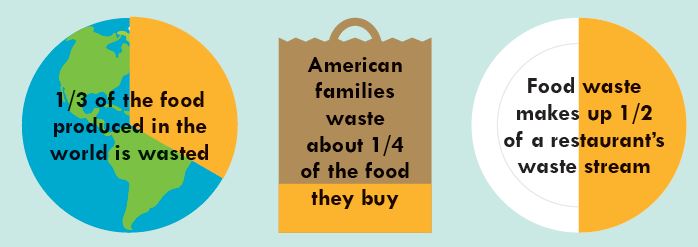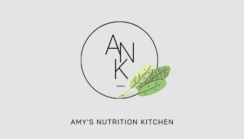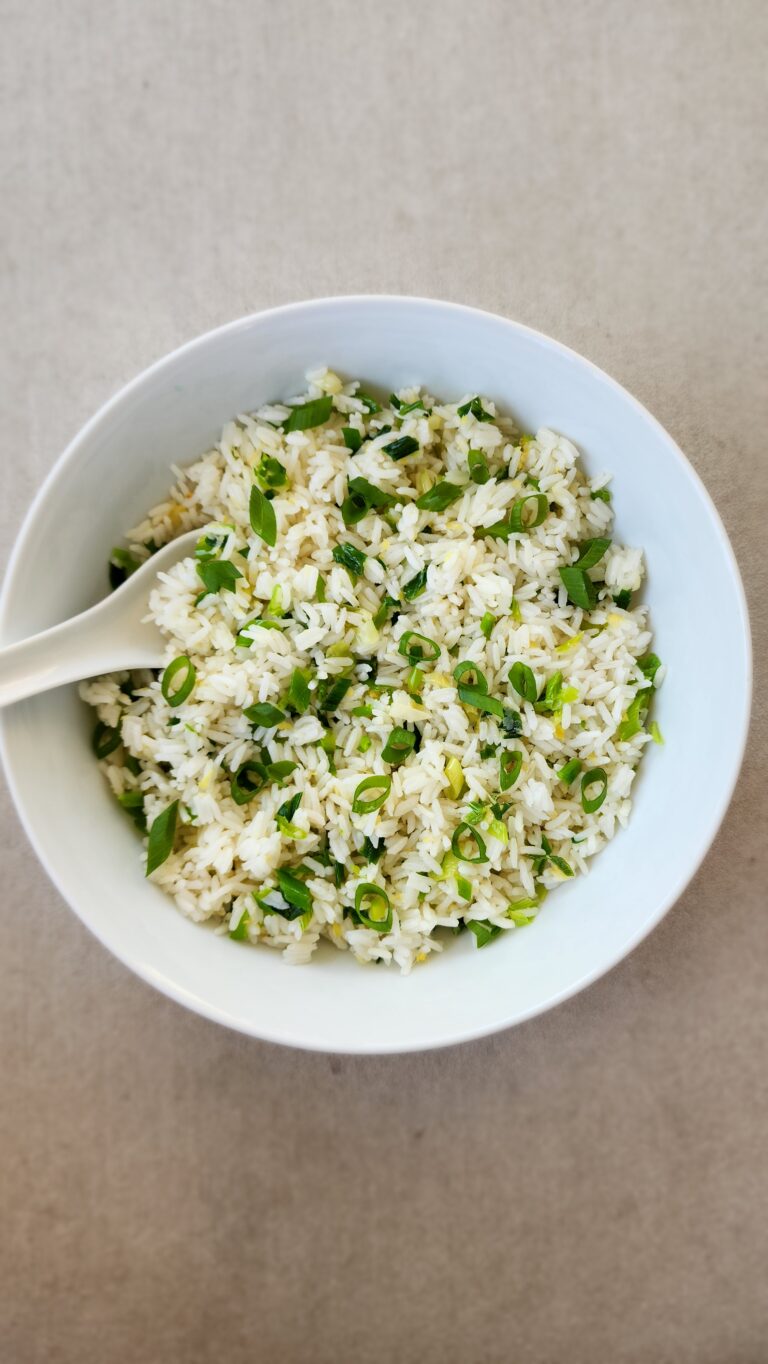National Nutrition Month® is a nutrition education and information campaign created annually in March by the Academy of Nutrition and Dietetics. The campaign focuses attention on the importance of making informed food choices and developing sound eating and physical activity habits.
“Go Further with Food” is the theme for 2018. What does it mean to go “further with food” – whether it’s starting the day with breakfast or fueling up before your afternoon workout, the foods you choose can make a direct impact on your performance. Preparing your foods to go further, by planning meals and snacks in advance will also help to reduce food loss and waste. Go Further with Food encourages us to gain the benefits from eating healthy all while encouraging us to also find ways to cut back on food waste. That’s the challenge, eating healthy all while managing our food resources.

Sunday is typically the day when I plan my meals for the week and then meal prep. I sit down and gather all the recipes I’ve seen throughout the week that interest me (or browse through my cookbooks) and start making my grocery list. I go to the grocery store and then do 1-2 hours of meal prep – washing and cutting veggies, making grains for the week, draining tofu to sauté, etc. Some people ask me actually how long this takes me and the answer is that it just depends on how much food I’m making and also how intricate the recipes are. Meal prep doesn’t have to take you hours on end, but this truly does help me so that I don’t have to literally cook every night after getting home from work. Find what works for you and you do you.
I’ve always boasted that I eat most of my meals at home and keep my grocery bill down to less than $100. But recently, not only have I been spending more but I’ve also been eating out more. You may wonder how that’s possible – how can she be spending more money at the store if she’s eating out as well. I’ve been experimenting with recipes here and there and that takes extra ingredients. But with all this experimenting I’ve noticed as of recent that I’ve been wasting some food I prepare because I might in fact eat out instead of eating what I’ve prepared. So I’m calling myself out this National Nutrition Month® and making it my aim to reduce the amount of food that I’ve been wasting. Now don’t get me wrong I do share some things that I’ve prepared that make an excess amount – just ask my dad or brother – but come the end of the week and I’m cleaning out the fridge and I can see where some things go bad because I haven’t eaten them in time. I’ve got to plan my week better and stay strong when asked to eat out and just eat my own food. Call me a food snob, but 9 times out of 10 I prefer my food anyways.
We as individuals can implement small changes that make a BIG difference in the amount of food we throw away each year. Just pick and choose from the list of the following tips for reducing food waste. Even better? Try to do them all, implementing them one at a time.
Shop smart. Only buy what you need. This sounds obvious, but it’s the truth. How many of us have the best of intentions of cooking every meal for the week? Okay, maybe not everybody, but my point is to PLAN YOUR MEALS. Again, this may sound obvious, but even I need reminding of this. I planned my meals for this week and know that my Wednesday is going to be an early day and a long day. What that means for me is that I need to plan something to have for lunch and dinner and bring it with me. Too many times in this past month I’ve been eating lunch out and end up wasting what I brought. This has been the pattern and I recognize it and I’m changing it all in the hopes to reduce my food waste (and money!).
Shop more often – This might sound absurd, but hear me out. Your initial thought might be that this will make you end up spending more money, but overall it might be helpful in avoiding having to throw away unused items that go bad by the end of the week. Perfect example? Bananas. I buy a couple of bananas for the beginning of the week to enjoy when they’re ripe and not too brown, because I definitely don’t like a too ripe banana (and no I do not freeze bananas for smoothies. #worsttrendever). If I need more throughout the week I pick a few more bananas up. Sometimes I find that the other fruit I’ve bought for the week ends up being enough and don’t even need to pick up more bananas. This has been helpful for bananas as well as for when I am experimenting with new recipes – I will give some of my already prepared food away (less food waste) so that I’m able to make the new recipe I’ve been wanting to make. Bonus is that I am in walking distance from work to a grocery store – but of course, only shop more often if it’s a possibility.
Lists are your friends – Apparently now some refrigerators have an app that you can see into your refrigerator? I’m not that high-tech, yet. For now I make a running list of things as I run out of them. This allows me to know what I need to buy at the store. Efficiency at its best. Otherwise I’m buying double of something and end up wasting what I already had. Now if it happens to be simply extra vegetables see my suggestion below. But sometimes it’s milk or creamer and that should really be FIFO (first in first out) and I can only drink so much of that at a time. The list is my friend and helps me buy what I need in the moment. And shopping more often helps me pick up when I need more, so I don’t feel pressured to pick it up on my weekly shopping day. I hope that made sense. Remember, these are just tips to get you thinking and ultimately you’ll need to reflect and find what works for you.
Watch out for BOGO (buy one get one) – while it may be a deal, think about if it’s actually a healthy food (Publix I’m looking at you and all of your tempting unhealthy BOGOs) and if you really will be able to use them all. Strawberries this week are 3 for $6. Keep in mind some stores will let you get just one package for $2. It doesn’t mean you have to get all 3 packages. (& yes, I know that some stores do make you get all 3, but the point is to check out the store’s policy). The deal is good, but maybe then you need to freeze what you won’t use! Just please don’t make a smoothie #worsttrendever.
One bad apple can ruin a bunch – I’ve had this happen all too often with oranges recently. I’ll buy the bag of oranges and there will be just one bad one that starts to mold the others. I’ve recently bought a nice fruit bowl and I take the oranges out of the bag so they don’t even have a chance to spoil the others. Fruit in sight makes for a healthy snack too!
Bread can freeze and so can leftovers. I know most people know this and I also know that most bread doesn’t mold (that’s a problem to talk about for another day). However, it’s important to point out for the mere fact that not just bread freezes. Mind blown? Stating the obvious? Maybe, but how many of us utilize the freezer and freeze leftovers? I use my crock-pot occasionally to make homemade soups. As a single person household that’s a lot of soup. I utilize a few portions of the soup for the week and then save some for the upcoming weeks. It’s a win-win: food for the week, less food waste, and food already prepared when I’m too busy to cook!
Freeze Leftover Fresh Herbs – I’ve been buying fresh herbs more and more often. I would grow them but I do not have a green thumb to save my life. My problem most times is that I may not use all of them for the recipes for that week. And me being me I buy the fresh herbs to make sure the recipe tastes the way it should. But how much tarragon can you use in a week really? Answer to my problem (not really a problem) – freezing the herbs in olive oil. So simple and so life-changing. Now to simply label the frozen items a little better. And the other thing I really try hard to do is to make recipes that might call for the same herbs throughout the week (so that it’s all used up). But again, how much tarragon can I really use? Freezing the extra has been my solution.
Tupperware. I invested recently and switched out almost all of my storage containers for glass. After starting my new job, I found out real quick glass weighs WAY too much. So I went on the search for storage containers that were safe. Thanks Container Store for the find – Décor TellFresh – free of BPA, PVC, lead and phthalates, so they’re completely safe for storing food. Pantry. Freezer. Microwave. And the best part? They have the measuring amounts on the container. Call me a nutrition nerd if you want, but that helps/take the guessing out of some measuring when I need to!
Cook with every part of the food. I’m calling all you “zoodlers” out there. How many of you zoodle your way through the zucchini and simply throw the core away once you’re done zoodling? I’ve seen it happen. It doesn’t look like the zoodle and so you toss it to the side. Well, that my friends is the opposite of going further with food. Another thing to point out is that you can eat the greens of many vegetables. Beet greens sautéed are delish! So what you might thing is waste is actually edible. Re-think all parts of your vegetables.
Make frittatas with your leftover vegetables. A frittata is a quick and simple meal for breakfast or dinner (aka brinner). And the best part is that almost any vegetable combination will work. So instead of tossing some of those vegetables, sauté them up and add eggs and cheese and you’ve got a simple weeknight meal. We’re filming an upcoming video for our series of #BaptistHealthy. Stay tuned and I’ll post that video in the next few months (if you want a sure proof combination!)
When all else fails, compost. Hate potato skins? Don’t feel like turning wilted vegetables into soup stock? No worries; food scraps still don’t need to be tossed. Just start a compost pile in the backyard and convert food waste into a useful resource. Don’t worry, I’m writing this partially for myself. I’ve always wanted to start one. Maybe this will be the year to do so!
Cutting back on food waste is incredibly easy. I hope these tips were helpful and have made you think about how you and your family can help to “Go Further with Food”. Happy National Nutrition Month®!







